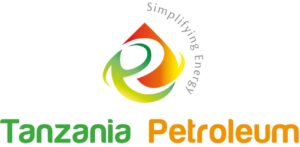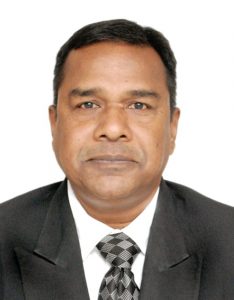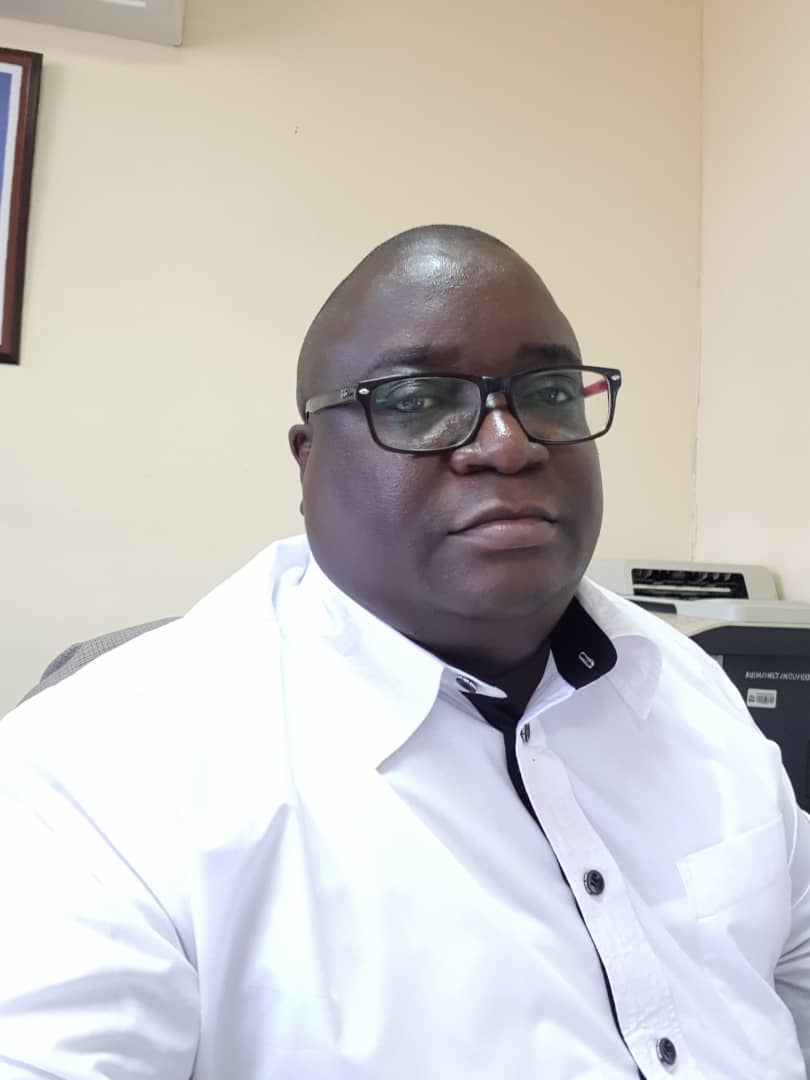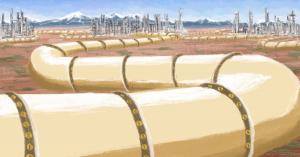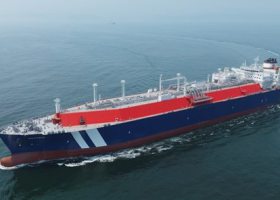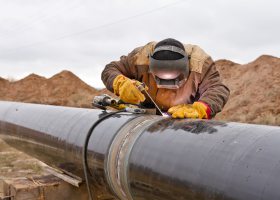“Collaboration, key to Tanzania’s oil, gas growth” – Imran
/in Career Advice/by Hussein BoffuDemps Offshore Services To Bridge The Local Skills Gap In Tanzania’s Oil and Gas Sector.
/in Career Advice/by Hussein Boffu
Sudesh Dewar, Is the Chief executive Officer of Demps offshore services, He talks about the operations, challenges, and initiatives for overcoming the local workforce challenge in East Africa’s oil and gas sector with special focus in Tanzania.
HUSSEIN BOFFU brings the excerpts
Briefly tell us how did you get into oil and gas business?
Started my career in the oil & gas field from the year 1985. Commenced my career from the fleet personnel department. My involvement revolved around crewing & Manning for various offshore spreads in the offshore oil field sector.
Later took over international assignments, functioning from UAE. Was instrumental in setting up offices & operations within the India & middle east region for my then employers. Developed & managed international crewing agencies & vessel agents for offshore projects which were pertaining to Oil explorations & Offshore EPC.
Finally ventured into my own business in the year 2006 of providing professional crew management services to offshore/onshore projects. Covered all segments of oil & gas. We have the ability to arrange & manage large contingent of the workforce for multiple projects. We handle the entire gamut of HR. Our concept/intention is to ease out the pressure of managing the required manpower & give the client room for focusing on other important issues. Our philosophy is to be an integral part of the client’s project success. My company stands on three pillars namely dependability, client’s confidence & professionalism.
Skilled workforce shortage is the biggest challenge in developing the local oil and gas industry. How does that impact your operation in the region, is there any internal mechanism to overcome the challenge?
Looking at the current workforce in Tanzania especially for oil & gas projects is an absolute shortage. This is because there have not been any large oil & gas operations carried out in the past. Our company stands a great chance to capitalize due to our geo-strategic location (India). We will be providing highly professional manpower be it for any projects at a very competitive price. One of the reasons for being price competitive is because of our location. As we intend to open up our branch in Tanzania, all efforts will be made to train & develop the local manpower available. Thus creating job opportunities. This will further make us more competitive in services & rates.
The industry crash of 2014-2017 was the worst in the decades. The price of oil is recovering gradually. How has this impacted your operation?
Yes, the oil prices are increasing with some setbacks from time to time. Considering the price fluctuation & upper trend we prepare ourselves in such a way that we can sustain especially the downtrend & complete the ongoing contracts. Hard negotiation on salary, surplus skilled crew availability in the market, providing steady employment, lucrative perks are the essence of our competitiveness. If indicated by the clients the project contract value, we can come out with competitive price thus enabling the clients to complete projects on a profitable note.
5 Reasons Why Public Relation And Marketing Are Important For Every Company In Oil, Gas
/in Career Advice/by Hussein BoffuIt is no secret that some people still criticise the oil and gas industry. There are environmentalists claiming that the industry’s stakeholders cannot protect the environment as well as community groups whining that oil and gas activities (such as exploration) contribute little or nothing to mankind.
The industry is still relatively new in East Africa. Consequently, many people are still ignorant of the industry’s benefits to the society.
The oil and gas industry has been depicted as negative, and this perception is common among the people. That is dangerous.
Because it will affect the ability of oil companies to hire and retain the best talents that will develop the localised oil industry. This perception is a threat to oil companies and their reputation, and will affect their day-to-day activities.
Most importantly, it will ruin the image of the companies in the stakeholders’ mind. These stakeholders include: investors, government bodies, suppliers and shareholders.
However, public relations can be a powerful tool to enhance the oil companies’ image, strengthen the relationship with stakeholders and improve the reputation of oil and gas companies.
For example, take a press release that tells a powerful story about your company’s operations, your corporate social responsibility programme.
With public relations specialists or agencies that have a strong relationship with editors and journalists, and connection with publications and media outlets in Tanzania and East Africa, your company’s message will get the maximum exposure it deserves.
Your message will reach more audience, raise your brand awareness and create a positive company image with stakeholders.
Here are the benefits of adopting public relations and marketing communications program.
1.Attracting Talent:
Shortage of skilled personnel is one of the challenges in the developing oil and gas industry.
“So many young people nowadays don’t want to come to work in our industry. The oil and gas industry is an industry of engineering and project management. What happens if there are no competent project managers and engineers to hire? It’s going to hurt the stakeholders in the industry,” says Mark LaCour, Director, Modal Point.
The popular and growing belief among young people is that the industry has no or gloomy future.
Public relations and marketing communications program can inform the young generation that your company is one of the best places to develop their career and, by extension, make a difference in the society. This will help oil and gas companies hired talented young minds.
2.Strengthened Relationships
Public relations also improves your relationship with stakeholders such as investors, regulators, shareholders and suppliers. For example, with the help of public relations specialists or agencies, your organization can produce a special report which highlights giant strides your company has made; say, for instance, how you meet the local content requirements in a region with no skilled labor. The PR agencies will distribute that report to the major industry events in East Africa and beyond. So, your message remains visible long after issuing the report. It will reach many investors and other stakeholders which wilk continue to raise awareness for your company. It will build relationships for you because the potential investors or stakeholders are have read how your organization handles risk and challenges, and the giant strides you have made despite the challenges.
3.Enhanced Trust and Credibility
PR improves the reputation of your company, and reputation is one of the major reasons people patronize businesses. When you tell stories about your company’s operations and activities, you raise customers’ trust and that of suppliers who would like to or who work with your company, because they understand your operations and activities.
4. Increase Brand Value
Public relations also help create brand awareness and maintain company’s image
Public relations is more than just publicity. It creates a perception that stakeholders should and would have about your company.
“Oil and Gas Face Negative Perception”-Mark LaCour
/in Career Advice/by Hussein Boffu
Mark LaCour, Director Modal point has shaped enviable career in oil and gas sector. A driven business-minded man. In this interview he shares the impact of collaboration in the nation’s oil and gas industry.Industry trends, digital technologies and his prediction for the future of the oil and gas industry in next five years.
Hussein BOFFU brings the excerpts.
Briefly tell us how did you get into oil and gas business?
I got started in the oil and gas industry almost twenty five years ago working for the phone company in the East of the United States of America. And I knew absolutely nothing about the oil and gas industry.
That was actually valuable to me, I just didn’t know in that moment because when I got handed all the oil and gas accounts in BellSouth territory, I got handled everything; upstream companies, midstream companies, downstream companies and service companies. So, I got to see the entire industry how it works from beginning to end which is actually really valuable. Most people in our industry don’t know the whole industry, they only the part that they work in.
So, I did a bunch of work there, made a lot of great relationships, really proved myself during hurricane Katrina. My last corporate job was with Forrester Research where I had the oil and gas key accounts. And about nine years ago, I’ve decided to start my own company which is Modal Point and we were market research company in oil and gas.
So, I literally built this company, I did nothing but learn and talk to industry leaders about trends that we can help our clients sell their products and services. So, once again, I was consistently constantly learning about the industry.
During that journal, I got a bunch of associations that wanted me to come on board. I’m on the board of directors with the American Petroleum Institute, the director of public relations and so, that even further my industry knowledge. As part of growing Modal Point’s business, I got involved in social media. We launched the first podcast about four years ago and you fast forward to now and we now have the top six podcasts in the world in the oil and gas industry all sponsored by big companies and we’re growing. We add a new podcast every other month or so.
I now get paid to speak or do panels. And so, Modal Point I’ve literally shut down as my market research company and sort of back up as my speaking platform.
So, if Hussein would ask me today what do I do for a living, I have to say I just talk for living which is actually kind of cool.
Aside from the drop in oil price, what are some of the challenges the industry is facing?
The industry is facing two – two big challenges right now. One is negative public perception which there’s always been some of that, but in the last decade social media has allowed the people that don’t like our industry to amplify their messaging. And so, a lot of people in the world don’t understand the benefit that our industry brings to mankind. That’s dangerous. That’s going to affect us the ability to hire and retain talent to work in new areas of the world.
The second thing I spoke about talent is the labor shortage. So many young people in today’s world don’t want to come work in our industry and the oil and gas industry is an industry of engineering and project management. What happens if we can’t hire project managers and engineers? It’s going to really hurt us.
Now, part of that is the drive the adaptation of new technology. And then, finally, the anti-oil and gas people have gotten really smart. They figured out if they can shut down pipelines and you can’t move hydrocarbons to markets so there’s no reason to drill, there’s nothing for anybody to buy. And, same way with water, both — getting rid to produce water and then actually the use of fresh water in drilling operations.
And so, those are some of the challenges the industry is facing, but the negative public perception I would say is number one.
How do you think the global oil trade will evolve in the future?
The trade is already evolving. With things like block chain, there’s no longer chances for people to get rip off for people to steal from other people during oil and gas transactions. So, the global oil trade will evolve.
The other thing that’s happening here in the US is we’re getting more and more LNG exports and less and less crude oil exports. Now, we still – still to this day export a ton of crude and natural gas and that won’t ever stop. But, it is interesting to see the rise in LNG exports because LNG is the fuel of the future. If you look at what Exxon and Shell has done the last couple of years, they’ve turned themselves into natural gas companies because they realized that natural gas is the fuel of the future.
But, there’s a flipside to that and that is even though we’re building around the world and a lot of here in the US LNG facilities to export natural gas, other parts of the world then need to build the opposite of that which is LNG import facilities so they can take that liquefied natural gas and turn it back into a vapor and put it in their gas system. So, that’s just years and years and years and years of construction projects which will benefit the companies that build those types of things.
What are your thoughts on collaboration between service providers in the East African oil market?
So, right now they are not collaborating, but if they want to maintain future business, they will have to collaborate. The world’s population is rapidly getting to a point where they understand because of things like internet access how business should be done, right? They’re no longer sequestered off somewhere and they don’t understand how the rest of the world does business.
One of the big things is the oil and gas industry needs to be fully supportive of local communities. So, not just come there and offer jobs, but come to different countries and offer careers, not a job, but career paths. Offer things like help build schools and hospitals and medical care and help build infrastructure. And we do that, but in order to do that effectively in the future, the service companies especially have to quit looking at each other as competitors even though they are and work together.
It’s interesting, you’re starting to see this happen right now in the US in the Permian which is one of the hot fields of land in the world. There’s not enough resources, so the service providers are having to work together because they don’t have any choice and it’s actually a really beautiful thing.
Please share your top predictions for the next five years?
I don’t have a crystal ball. I think downstream is going to be a huge market for everybody. And downstream is basically taking hydrocarbons and turn it to stuff that you can sell like plastics and paints and insulation and foam rubber and you know car tires and windmill blades. That’s going to be huge because the world’s population is moving out of rural agrarian society.
You know think of China, think of India, think a lot of the countries in Africa where right now people are farmers and they have a family that’s their labor force and that’s what they use to feed themselves. In another generation or two they’re all going to be living in cities. So, right now, they don’t need plastic buckets and they don’t need Tupperware and they don’t need, you know, Band Aids, but pretty soon they will need that and all that comes from hydrocarbons. So, that’s one of the big things in the future is we’re going to use less and less oil and gas for fuel, but more of it to make stuff.
The other thing is the oil and gas industry is vital to space travel. No one ever talks about that. The only fuel that has enough energy density to get us out of our gravity well here on earth is hydrocarbons. So, you look at what Elon Musk is doing with Space Xs. His rockets run on kerosene, refined from crude oil. It’s basically kerosene and liquid oxygen, it’s the power combination to get us out. So, all of these stuff that makes space life happens; space suits, oxygen tanks, shelters, space stations, reentry capsules, the tires on the landers, the remote operated vehicles that we send out ahead of the humans, all that is made from hydrocarbons. So, I think the space industry is going to be another big growth area for us in the future.
You can see a lot of stuff geopolitically happen. The US now is for the first time in its history has the ability to out or over supply OPEC. If we wanted to, we could open up all these wells that are sitting here that haven’t been put production here just in the US and produce more oil and gas than OPEC ever could.
Now, we geopolitically are the swing player, that’s a really cool place because one of the things that you can do is you can use hydrocarbons as a weapon and that’s what OPEC historically has done. Now, we’re taking that ability away from them and unfortunately, also, away from the Russians. I really wish the Russian US would start cooperating instead of looking at each other as enemies. I was a marine during the Cold War; I don’t want to go back there. So, hopefully our leaders can fix all of that.
We talked about – we haven’t talked about for the future things like data, the data that the oil and gas industry has created for years all of a sudden has become value – has become more valuable in the future.
You know you look at something like Google maps, companies like Exxon and Chevron have that type of degree of global seismic data. So, not just the pictures of the buildings and where the streets are, they know what’s under the ground all over the world, that is super valuable.
So, those are some predictions in the next five years.
What are the imperatives in LNG and other oil and gas projects in Tanzania industrialization?
LNG is a quick way for Tanzania to start producing abundant reliable cheap electricity for its people. That abundant cheap reliable electricity leads to prosperity because now schools have electricity, hospitals have electricity, the people in Tanzania have electricity, so they can learn so they have internet access. So, I think it’s – and LNG is automatically 60% cleaner than running coal to make electricity. So, I think that’s a good use of LNG in Tanzania.
The thing is though, they may not actually need LNG as Tanzania’s developing its oil and gas projects, you’re hitting natural gas, actually a lot of natural gas. Unless you’re going to export it, you don’t need to spend the time or the money to compress it into LNG, you just need to build infrastructure to bring it to all the people.
If you think about it here in the US, I have a natural gas stove sitting in my kitchen right now. When I go turn that natural gas stove to a big infrastructure, so a series of pipes, literally my stove is connected back to the Jurassic or [0:11:13 inaudible] era in our history because that’s where that well is. Think about that. I am literally getting natural gas that was developed while the dinosaurs are on the earth or after or before and it’s being transported through the infrastructure we have here in the US to my stove so I can use it. Tanzania could do the same thing and, actually, you’re headed that way.
So, there we go, I answered Hussein’s questions. I’m going to send this off to be transcribed. I hope people found this valuable.
Now, if you’re in the Tanzania area, check out what Hussein is doing. He is really a mover and shaker out there. And we partnered with him on several things and we’ll continue to partner with him because he’s just doing really good business.
New Tanzania’s LNG is Potential For Global Market
/in Career Advice/by Hussein Boffu
Eng. Charles Jimmy Sangweni, Acting Director General, Petroleum Upstream Regulatory Authority(PURA), talks about the potential LNG market and the current opportunities abound Tanzania’s upstream sector.
HUSSEIN BOFFU brings the excerpts.
Tanzania’s oil and gas upstream sector offers many opportunities to businesses and individuals. As an upstream regulator, what are the main areas of investment that investors can leverage?
Main areas of investment that the Tanzania upstream industry offer to investors include.
Reconnaissance business opportunities for geophysical prospecting companies in unlicensed open areas. Exploration and production rights to oil Companies in the open demarcated Blocks that have Hydrocarbon potential E.g. open Blocks that were not licensed in the 4th Bidding Round Lake Tanganyika, South Block, Lake Tanganyika North Block, Pangani Block, Kyela Block etc;
And goods and services delivery opportunities to service companies to Support the ongoing production activities in the Songo Songo and Mnazi Bay licenses as well as ongoing Exploration Production (M&P)Operations in other licenses like the expected drilling operation in Lake RukwaBlock, Mtwara Block and Kilosa- KilomberoBlock.
The oil price has increased substantially after a major slump. How has this affected upstream operation in Tanzania ’s oil and gas industry?
Like the rest of the world, operations in Tanzania were substantially affected by the decline in the global crude oil prices. The impact suffered by upstream operations in Tanzania were evidenced in the slowing down of investment in exploration activities by Oil Companies through postponement of operation such as exploration drilling and planned geophysical surveys. The recent recovery in global crude oil prices is yet to yield results in the Local operations.
The demand for LNG globally is rapidly increasing, with China and India demanding for more. How does that affect Tanzania’s economy?
The rapid evolving of LNG global market provide both excitement of a hopeful potential market and chilling feeling to new LNG producing country like Tanzania as new markets are increasingly in favor of spot market supply and short term LNG purchase contract as opposed to the traditional long term LNG sale contract that are preferred by LNG producers for certainty of financing of the LNG development projects.
Tanzania is well situated geographically to serve the Asian LNG market, hence the growth in demand for LNG in China and India provide Tanzania with a very attractive market that will drive the development of LNG project in Tanzania and give assurance to the potential financier of the Lucrative market that will enable Loan repayment.
Uganda, Tanzania set new deadline for oil pipeline agreement
/in Career Advice/by Hussein BoffuUganda and Tanzania have agreed to complete and sign a Host Government Agreement for the East Africa crude oil pipeline by end of June this year.
The new deadline comes after week-long negotiations between Ministers from Tanzania and Uganda.
The protracted negotiations at Kampala Serena Hotel ended on Friday with each of the sides pushing to ensure that they fully benefit from the pipeline whose construction will cost over $3.5 billion.
Sources revealed there was no conclusion on talks on revenue sharing, taxation especially corporate income tax and local content in terms of jobs during the construction of the over 1400 kilometre pipeline from Hoima in Uganda to Tanga in Tanzania.
The ministers and few technocrats from both sides would occasionally break into caucuses before they would agree on sticky issues.
On the Ugandan side were Energy Minister, Irene Muloni, Lands Minister, Betty Amongi, Deputy Attorney General, Mwesigwa Rukutana and Energy Permanent Secretary, Robert Kasande.
Finance Minister, Matia Kasaijja had to be called at some moment when the two sides seemed not to agree on financing, revenue sharing and taxation.
Kasaijja told journalists that there were points of disagreement between the two sides but noted they will not hinder the agreement. He left after almost one hour at the meeting.
On the Tanzanian were the energy Minister, Dr. Medard Kalemani, Professor, Palamagamba Kabudi, the Minister of Constitutional and Legal Affairs from Tanzania and January Makamba from the Tanzania’s presidency among others.
Energy and Mineral Development Minister, Engineer Irene Muloni said they have since April last year produced a draft Host Government Agreement pending the endorsement of the presidents.
She says oil can only come out when the crude oil pipeline and the refinery are ready to receive oil.
Each of the governments has to sign an agreement with the pipeline company. Uganda and Tanzania had agreed to fast-track developments to have first oil by 2020 but the timeline has had to be shifted.
The idea behind the host government agreements is to position the two countries to maximize the benefits from the business of shipping or transporting crude oil to the international markets.
Tanzania’s the energy Minister Dr. Medard Kilimani told journalists that there have been prolonged negotiations but reported they seem to have agreed on most of the crucial issues.
Kalemani said the negotiations that have been in place since last year have not affected preparations towards construction of the pipeline.
He said Tanzania has already identified a place where the five oil storage tanks will be constructed. Each of the tanks according to Kilimani will store half a million litres of oil.
He said the construction of the pipeline should be with 36 months after the host government agreements have been signed.
Source:www.independent.co.ug
Environment study paves the way for Lokichar pipeline
/in Career Advice/by Hussein BoffuThe Environmental Social Impact Assessment report for the Lamu to Lokichar Crude Oil Pipeline (LLCOP) project has been released to members of the public.
The report was undertaken by Golder Associates (UK) Limited, an international consultancy, and Kenyan ESF Consultants.
Read Also:Oil and Gas Pipeline: Demand For Goods And Services In Oil and Gas Pipeline Project Life Cycle
A senior officer who took part in compiling the report and who requested to remain anonymous told Shipping that the report has also a been submitted to the National Environmental Management Authority (Nema) and is out for public consumption.
“We undertook various public participation forums, especially for residents in all the counties where the pipeline cuts across including Lamu. We prepared the scoping report which was then given to members of the public as well as Nema. As we speak, feasibility studies are underway in all the areas that the pipeline passes through,” said the official on phone.
The report indicates that the pipeline will be underground but will have some above ground installations at suitable locations.
The LLCOP project, which is set to start in 2022, is one of the major infrastructure investments by the national government and is apart of the Sh2.5 trillion Lamu Port South Sudan Ethiopia Transport (LAPSSET) Corridor project which is underway at Kililana in Lamu West.
The Lokichar to Lamu oil pipeline project is perceived as the next frontier on matters economy, trade, industry and employment of locals in the region.
Being a key component of the LAPSSET project, the LLCOP will be an economic game changer, particularly for the six counties that the pipeline will cut across.
Various stakeholders interviewed said the project is anticipated to open up the northern Kenya region to both trade and investment.
What does the pipeline entail?
The pipeline is about 820 kilometres long and needs a 26-metre wide temporary corridor for construction and a six-metre wide corridor for permanent operation.
As a sub-component of LAPSSET, the pipeline will be routed for its entire length within the corridor.
The LAPSSET Corridor Development Authority is the lead government organisation responsible for the development of the corridor and will be the leasor of the pipeline to LLCOP which will in turn be responsible for the construction and operation of the pipeline.
Secondly, LLCOP will comprise of 16 above ground installations which include pumping stations, pressure reduction stations and electricity generation stations.
The pipeline will also have an oil storage facility at the new Lamu port in Kililana, Lamu West.
The proposed oil storage facility is however still being assessed to determine whether there will be either an onshore facility comprising storage tanks and associated infrastructure or whether there will be an offshore facility consisting of a floating storage vessel moored to the export berth.
The construction phase will see up to six camps which will provide accommodation for workers and areas for storage of equipment and other materials.
The six counties that the LLCOP crosses include Turkana, Samburu, Isiolo, Meru, Garissa and Lamu.
The route was developed to incorporate an engineering design, constructability, accessibility and logistical aspects for both construction and operation.
The purpose of the LLCOP project is to provide transportation, storage and export of crude oil from the Lokichar fields.
The project will link the oil fields with international markets.
According to the report, construction time will be two to three years.
Kenya Ports Authority (KPA) managing director Daniel Manduku, during his recent tour of Lamu port, said that plans were in place to ensure that the pipeline project commences.
Mr Manduku said they were engaging various private sector investors before deciding the appropriate investor to work with in implementing the project.
“We are discussing matters to do with the Lokichar-Lamu Crude Oil Pipeline. The project is lined up to take place in 2022.
“We want to give a duration of two years after completion of the first three berths at the LAPSSET so that we can use this period to engage private sector investors to see which one to work with in implementing the project,” said Mr Manduku.
The government entered into a joint development agreement with the Kenya Joint Venture comprising of Tullow Oil Kenya BV, Africa Oil Kenya BV, and Total Oil for the development of the pipeline.
The facility will be used to transport stabilised crude oil from the South Lokichar Basin to the Lamu port.
The LLCOP therefore supports one of the key pillars for economic development and as a key component of the LAPSSET programme is expected to reinforce the Vision 2030 strategy as well as development of the country.
The project will lead to job and business creation along the route.
source.www.businessdailyafrica.com
How The Oil and Gas Companies Buy Goods And Services For Big Projects In Tanzania And East Africa
/in Career Advice/by Hussein BoffuOil and gas companies need a tremendous amount of goods and services to make them successful in their operations.
But the purchasing process varies from the size of the projects, For small projects or low volume items they buy in two ways:
1.Order
This way, oil and gas companies buy without involving competition from other vendors.
That means a purchasing manager call or email a supplier to bring certain items. And they do this for suppliers who always deliver quickly or for the suppliers who are near to where they operate.
2.Quote
Once oil and gas companies need goods and services, they send an email to suppliers and ask them to give them the prices of such goods or services.
The quotation involves the list of goods and services with quantities and specification that are required by the purchaser and the terms and condition of the purchaser. Quotation helps oil and gas companies to decide which company to patronize.
But for the big projects, the purchasing process is entirely different.
Purchasing Process In The Oil and Gas Companies For Big Projects.
The truth about oil and gas industry is that some supply or contract opportunities have a long sales cycles. A good example of this is when you seek to be a major supplier of Oil companies such as Engineering. Procurement, Contractor (EPC).
In this kind of procurement, oil companies take too long to make a buying decision. They want to be sure that a supplier has capacity and capability for provision of goods and services.
This involves the procurement of huge quantities of materials or high technology services.
The purchasing process in big oil and gas projects are:
1. Issue Request For Information(RFI)
The first step in selecting a preferred supplier is issuing RFI.
RFI is a document issued to public w requested interested suppliers to give the basic information about their services products and organizations. And suppliers should describe how they can meet the procurement requirement. It helps interested suppliers to understand the prourement requirement
The RFI contains procurement requirement that interested suppliers must fulfill. Here are an example of oil and gas companies procurement requirement in RFI.
- Supplier experiences.
- Types of goods and quantity.
- Meet health safety and environment standards.
- Your commitments to promote local content.
- Strong Business Ethics.
It also helps the oil companies to get general information about suppliers that help them to get a short list of potential supplier for products and services.
Oil companies use the information whether supplier meet the procurement requirements or not.
Read also: Oil and Gas Pipeline: Demand For Goods And Services In Oil and Gas Pipeline Project Life Cycle.
2.Issue a Request For Proposal
Once RFI is produced, Request for Proposal is issued to the shortlisted suppliers.
The primary objective of the RFI is to collect more information about the supplier and find out whether suppliers have the capability and capacity to provide goods and services in the project.
In other words, RFP is released to the shortlisted suppliers to provide them with more detailed information about the work.
And suppliers are requested to submit the responses in a specific time framework.
3.Select Supplier
After the tender response expired, procurement determents will evaluate all the tender documents received from shortlisted suppliers using criteria different from those used in the RFI process. All unsuccessful suppliers will be notified. And a supplier with a high score will be selected as preferred supplier for provisions of goods and services to the project
4.Contract Award
BOOM! now you are about to smile at the bank. The preferred suppliers will be invited to negotiate a supplier agreement contracts. representatives from supplier company will authorize a contract through a formal signature.
Hope this helps. Good Luck.
Oil and Gas Pipeline: Demand For Goods And Services In Oil and Gas Pipeline Project Life Cycle
/in Career Advice/by Hussein Boffu
With massive natural gas discoveries in Tanzania. And immense crude oil reserves found in Uganda and Kenya. More pipeline infrastructures are needed in East Africa.
East Africa ’s energy demand has been growing steadily in recent years. And is expected to keep growing for the for the next twenty years.
The shortage of infrastructures means that more oil and gas pipelines are needed.
That means oil and gas pipeline is a growth sector in East Africa.
Uganda has chosen to transport its oil through Tanzania route. And also Tanzania is planning to build a pipeline that will carry natural gas from production areas to Uganda.
The more pipeline projects, the more opportunities in the region.
But it can be a little bit hard to capitalize on the opportunities offered by the pipeline project if you are unaware of the demand for goods and services in the pipeline project life cycle.
Because the demand for goods and services varies along the pipeline project life cycle.
If you are planning to be part of the new and huge oil and gas pipeline projects in Tanzania and East Africa. This article shows tremendous procurement opportunities in the pipeline projects.
. Opportunities in the oil and gas pipeline project life cycle.
Like a human being life, has stages including birth, growth, maturity, growth, and death. Pipeline projects also have a life with sequence phases including planning, construction, operation, and closure.
1.Planning.
This is the first stage that covers everything from securing regulatory approval, getting all permits of the people affected by the projects and estimating costs required to complete the project.
The planning phase is characterized by low field activity. Relatively happen in the field expect environmental, social and Front end engineering and design (FEED) study.
To enrich your background FEED is a stud conducted to determine the actual cost of the project and gather technical information.
During FEED the following objectives are also achieved.
Selecting entity that will operate and maintain the pipeline and associated facilities.
They also complete the required agreement with host governments.
Procurement opportunities are very limited and short term during the planning period.
2. Construction.
Once we have all agreements and know the labor and equipment cost, the Final investment decision is made and construction begins. The construction stage start by rapid mobilization of construction equipment and manpower to the site. The stage presents huge opportunities for suppliers and service providers. Oil companies start to spend a large amount of money. The number of equipment and personnel moved to the site is amazing during this period. To put it simply the big hiring boom for supplies and services begin at the construction stage.
3. Operation.
Once the pipeline construction is completed, we move on to the operation phase. The stage involves getting the products (oil or natural gas) to the market (consumers). The supply chain opportunities in this stage are a limited and long pipeline. Many oil and gas pipelines are designed to operate for 15 to 25 year.
Unlike the construction phase, operation phase is characterized by low activities and reduction of workforce.
The main activity in this stage is the maintenance of the pipeline and associated facilities.
Procurement and supply opportunities are medium but long term in this stage.
4. Closure
Finally, at end of their useful oil and gas pipeline must be closed. This stage is also called decommissioned The stage cover everything from emptying and removing pipeline and its associated facilities and return its route. Procurement opportunities are limited during this phase. However, some few supply and services opportunities arise when the activity to turn the land as close to its original condition. Example of activities during this phase is the removal of construction materials and large rocks.
That’s a demand analysis for an oil and gas pipeline project. Hopefully, this helps. Good Luck.
ABOUT TANZANIA PETROLEUM
Tanzania Petroleum helps you reach your goals.
CONTACT US
Dar es Salaam, Tanzania
+255655376543
info@tanzaniapetroleum.com
